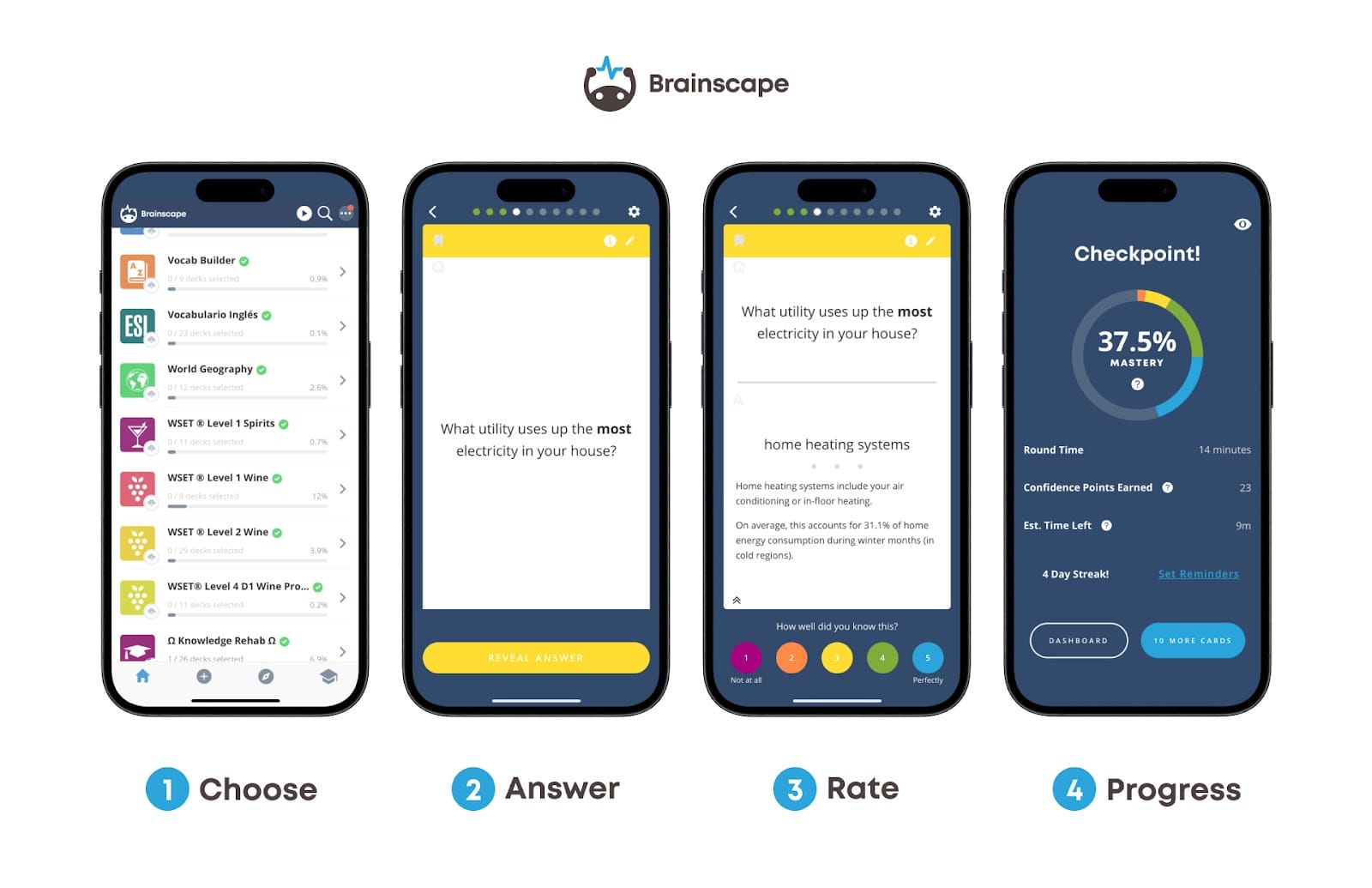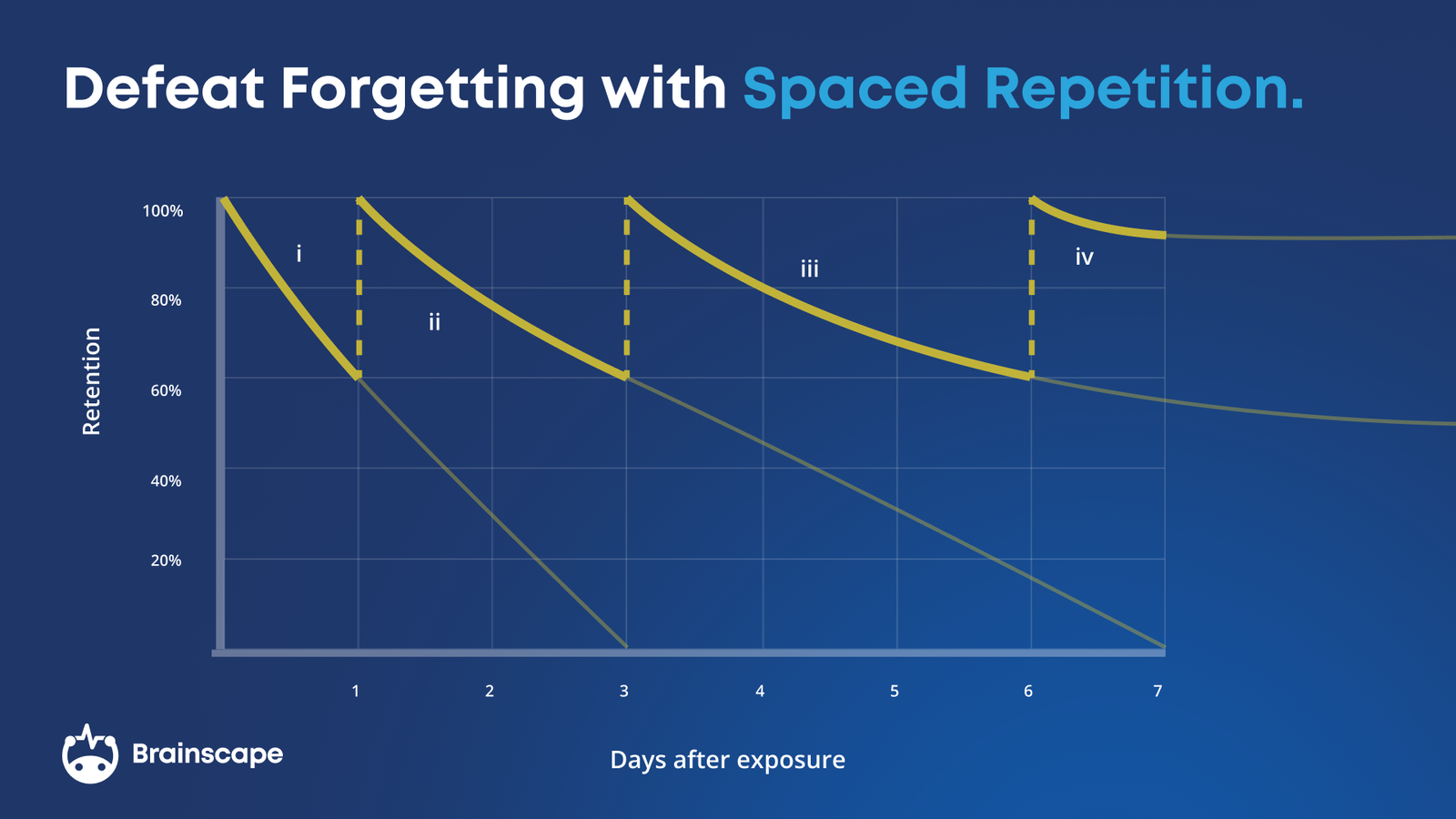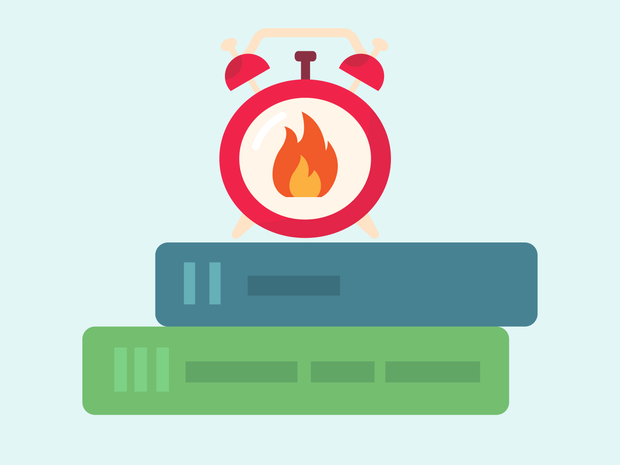Oops! You did it again.
Except you’re not Britney Spears and this isn’t 2004 ... so it’s just not sexy.
One of the highest, unwritten codes in education is the earlier you start studying for an exam, the better. Cramming doesn't work.
You knew that. But you’ve left your studying to the last minute and now your exam is looming over you with the menace of a tax deadline (or the Wednesday morning after Tequila Tuesday).
What you DON’T need right now is a slap on the wrist. You need a saving grace. And we’re here to give you one ... well, sort of. You have a lot of work ahead of you!
We here at Brainscape are obsessed with learning and the most time and energy-efficient ways students can do this. Through decades of cognitive science research, we have discovered that by working with (rather than in spite of, or even against) the brain’s cognitive hard-wiring, you can optimize your learning to study in HALF THE TIME.
To help you salvage the situation (because even top students have made the mistake of leaving things to the last minute), here's your “how to cram for a test” study guide. In it, we assume that you have little more than a day or two to prepare.
Follow these steps and you can pass.
You might not perform brilliantly—but our advice will help you make the most of the short time you have left.
Your Emergency Guide for How to Cram for a Test
Step 1. Determine What is Critically Important
Cut your study material down to only the bare essentials. The easiest way to find out what that is is to just ask your subject coordinator: “Hey, what should I really be focusing on for the test? Any tips?”
They’re not going to give everything away, but they might throw you a bone: “Focus on this chapter, make sure you understand that concept, etc.” Some instructors might even provide their own explicit study guide for the test.
Failing that:
- Ask your educator what chapters/concepts the test assesses.
- Ask fellow students and previous students what they found important.
- Look at old tests and exams for guidance (more on this later!).
- Refer to the "chapter outline", "key concepts/takeaways", and "questions list" at the beginning and end of the textbook chapters: these usually highlight the most salient points you need to know.
- Skim through the textbook and look for bolded vocab words and phrases. Sometimes, publishers will visually emphasize key points. The bare minimum you could do is learn these.
Narrowing down what you need to study could remove a lot of work from your plate. It’s a valuable filter.
Step 2. Create a Study Bubble ASAP!
Now, more than ever, eliminating distractions is paramount! Choose a place where you can hole up for hours of distraction-free studying, out of the way of friends, family, roomies, and needy pets.
Now IS NOT the time to:
- Study with others. Remember that group studying is not very efficient. You don't have time to risk inefficiency.
- Study in social spaces like coffee shops, where you can be seduced into people-watching or talking to the attractive person next to you.
Now IS the time to:
- Become a study hermit (it’s only for a day or three: you’ll live).
- Turn your phone OFF and any other devices that distract you with notifications. If you’re using your device to study, e.g. the Brainscape app, set it to do-not-disturb mode.
- Gather the necessary sustenance (water, coffee, snacks, etc.) Hunger and thirst can be super distracting. Also, you can use snacks as micro-rewards when you reach certain milestones.
Step 3. Use Brainscape’s Flashcards to Cram for Your Test

Brainscape’s web and mobile flashcards app is specifically engineered to help students learn TWICE as efficiently as traditional, passive studying (in other words: reading and re-reading your textbook and study notes). So, using our flashcard learning platform is probably the best way you can cram for your test; although, as always, we recommend preparing well in advance!
For starters, Brainscape has an extensive library of ready-made flashcards for a mind-boggling diversity of subjects, from astronomy to zoology and the WSET to the bar exam. Many of these are Brainscape-certified, which means that they have been put together by leading subject-matter experts. Others have been made by our users, with the best flashcard collections migrating to the top of the search pile. Plus, our AI toolbox allows you to make flashcards from your study materials in minutes!
The Brainscape library is a great place to start because it saves you from having to make your own flashcards. The most important material has already been condensed so you can dive right in. Also, our spaced repetition algorithm will ensure that the flashcards you struggle with the most are repeated at just the right intervals to help you learn them!

Step 4. Make Flashcards ONLY for the Important Concepts You Don’t Know Well
If you can’t find what you’re looking for in our library, make your own flashcards, but ONLY for the most important concepts you don’t know all that well. Don’t waste a minute of your time on anything non-essential.
What about essay questions?
You never know what you're going to get. But these still draw from a limited pool.
Look at sample essay questions and think about the easiest way you could answer them. Pick one or two versatile topics that you could use to answer as many questions as possible.
For example, if you're studying Macbeth, you might need to use quotes to back up your argument. Focus on one or two characters and their most versatile quotes that you know you could bring up in any discussion of the play. Or if you're studying the history of the French Revolution, pick one or two key players and focus on their story, motives, and quotes. This massively reduces the volume you need to memorize.
It's not as robust as knowing the entire text, but an in-depth memory of one theme will produce a higher-scoring essay than scattered surface pickings across multiple characters and concepts.
Step 5: Practice Past Exams, Tests, and Quizzes
Old tests and exams are the best possible source of insight into what you can expect from an upcoming assessment. They not only give you an idea of WHAT material is covered but also HOW this material is posed to you in question or essay form. So, get your grubby paws on as many of these as possible and practice.
Pro Tip: Use Brainscape to make flashcards out of the more difficult questions and practice those every chance you get: before you go to bed, on the bus in the mornings, and even on the can. Our AI tools turn practice exams into convenient flashcards within minutes!
Step 6. Review the Day/Morning Before the Exam
With time being so precious, reviewing what you’ve already studied might seem like a luxury, but it’s not. It’s essential. Running through all your flashcards one last time before your test can critically refresh your memory, effectively preventing all that information from evaporating before the test.
It’s better to spend time reinforcing what you’ve learned previously than to cover more ground and forget it ALL.
Lesson Learned ... Hopefully
If there’s any feeling better than skipping out of an exam you’ve been dreading, it’s doing so knowing you did really well. And the only way to do that is to prepare, which means consolidating your learning as you go along and not leaving it for the last minute.
You know this. I know you do. But if you do end up getting a good grade on the test you crammed for (hopefully thanks, in part, to this guide), try not to let the experience be positive reinforcement that cramming works for you.
While you may think you work better under pressure, there’s also an element of luck involved (getting asked questions you happened to study). Also, you’ll never live up to your full potential by cramming for a test. It’s as simple as that.
So, in the immortal words of Britney Spears: get to work b*tch!
Additional Reading
- How to build strong study habits
- How to study effectively with LESS total effort
- Getting motivation to study when you want to procrastinate
References
Burrows, T., Whatnall, M., Patterson, A., & Hutchesson, M. (2017). Associations between Dietary Intake and Academic Achievement in College Students: A Systematic Review. Healthcare, 5(4), 60. https://doi.org/10.3390/healthcare5040060
Glenn, D. (2007). Why cramming doesn’t work. Chronicle of Higher Education, 53(40), EJ771779. https://eric.ed.gov/?id=EJ771779
Hatch, R. (2024). How to Study. University of Florida College of Liberal Arts and Sciences. https://people.clas.ufl.edu/ufhatch/teaching-resources/how-to-study/
Lehigh University. (2024). Learning from a Past Exam | Student Affairs. Center for Academic Success. https://studentaffairs.lehigh.edu/success/study-skills-resources/note-taking-exam-preparation/past-exam
UNC-Chapel Hill Learning Center. (2024, February 19). Strategic Test Prep – Learning Center. Learning Center. https://learningcenter.unc.edu/tips-and-tools/strategic-test-prep/
